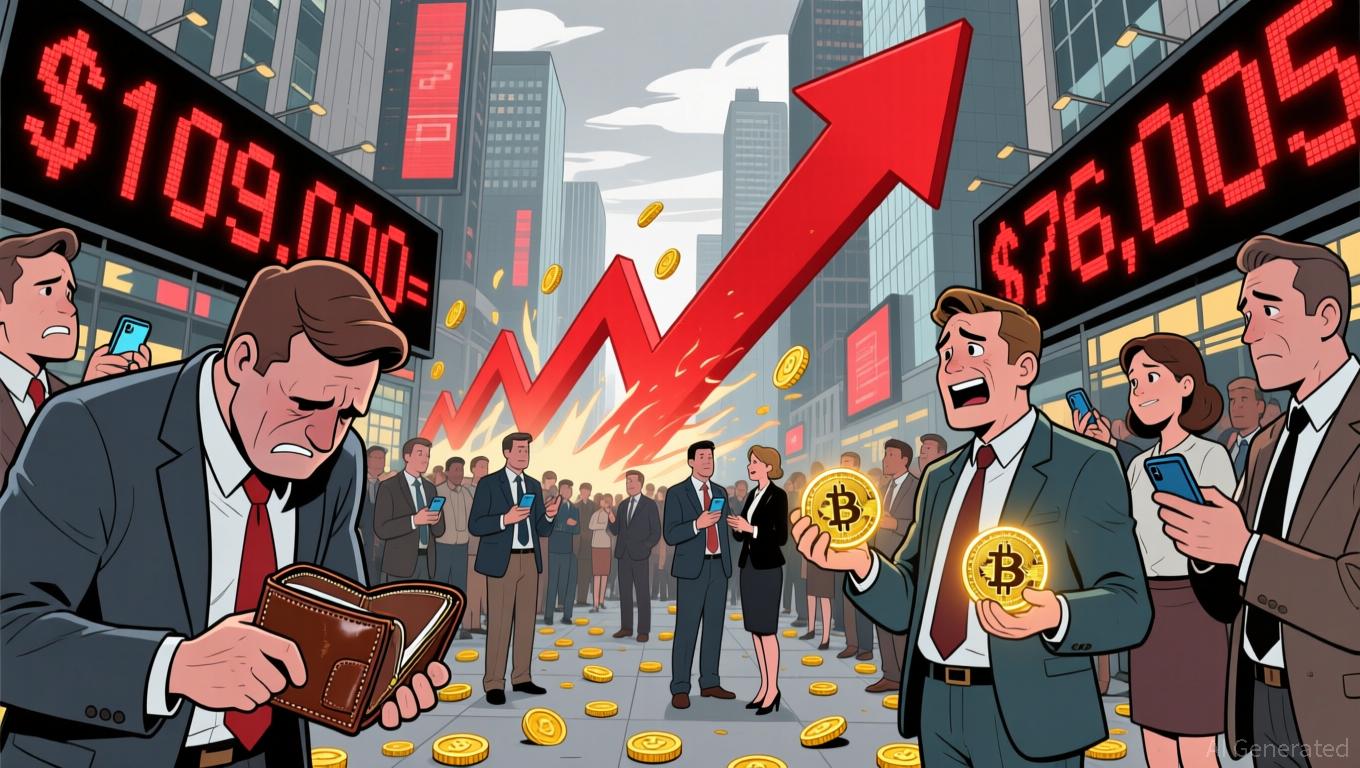The Downfall of ChainOpera AI Token: A Warning Story for AI-Based Cryptocurrency Initiatives
- ChainOpera AI (COAI) token's 96% collapse in late 2025 highlights systemic risks in AI-integrated blockchain projects, including centralized governance, technical flaws, and regulatory ambiguity. - Centralized control by ten wallets (87.9% supply) and untested AI algorithms exacerbated liquidity crises, failing to stabilize algorithmic stablecoins like xUSD and deUSD. - 2025 data shows 270% surge in AI-related technical vulnerabilities, while U.S. CLARITY Act ambiguity worsened investor uncertainty amid
Centralized Control and Technical Weaknesses: A Perfect Storm
The core issue behind COAI’s downfall was its dependence on centralized management to oversee an AI-driven DeFi platform. By the end of 2025, a mere ten wallets held 87.9% of all COAI tokens,
This incident exposes a wider problem in AI-blockchain projects: excessive trust in obscure and untested algorithms to run intricate financial platforms.
Regulatory Uncertainty and Market Mood: Adding Fuel to the Fire
Regulatory confusion further intensified the COAI crisis,
Negative market sentiment made the situation worse.
Investor Takeaways: Looking Past the Hype
The COAI incident provides important insights for those investing in AI-powered crypto platforms. Most notably, it demonstrates the perils of centralized control in projects that claim to be decentralized.
For institutional players, the collapse echoes broader worries about excessive dependence on AI.
Conclusion: The Need for Prudence and Transparency
The fall of the COAI token is not an isolated event but rather a sign of deeper, systemic issues in AI-enabled blockchain investments. As the field advances, it is crucial for all participants to balance innovation with caution, ensuring decentralized governance, robust technical safeguards, and flexible regulatory policies. For investors, the lesson is unmistakable: in the unpredictable landscape of AI-driven crypto, careful risk management, diversification, and a critical approach to governance are essential for survival.
Disclaimer: The content of this article solely reflects the author's opinion and does not represent the platform in any capacity. This article is not intended to serve as a reference for making investment decisions.
You may also like
XRP News Today: XRP Declines as ETF Investments Unable to Halt Downward Momentum
- XRP fell below $2.00 as macroeconomic uncertainty and ETF inflows failed to reverse its bearish trend despite $105M in Bitwise ETF inflows. - Futures Open Interest dropped to $3.57B, whale sales of 200M XRP, and institutional outflows accelerated the decline below key technical levels. - Technical indicators show RSI at 43 and negative MACD, with analysts warning of potential 50% declines to $1.25 if $2.00 support breaks. - The SEC-approved Bitwise 10 Crypto Index ETF (4.97% XRP allocation) may reshape d

Data Shortfalls and Policy Conflicts Prevent Fed from Lowering Rates in December
- The Fed’s December rate cut prospects have dimmed, with officials citing data gaps and inflation concerns, reducing the CME FedWatch probability to 32%. - Delayed BLS labor market reports left policymakers without critical metrics, fueling skepticism about justifying a cut amid internal divisions. - Officials like Christopher Waller argue for easing due to a "stall speed" labor market, while Lorie Logan and Beth Hammack caution against premature cuts risking inflation and market instability. - Markets ha

Bitcoin News Update: US Investigates Whether Bitmain Devices Pose Threat to Power Grid, Raising Concerns Over Espionage
- U.S. government investigates Bitmain's mining hardware over espionage risks, led by DHS with agencies like FCC and NSC. - Senate Intelligence Committee warns Bitmain's devices near military sites could be remotely manipulated from China, linking them to CCP ties. - Bitmain denies allegations but faces scrutiny after Trump family's $314M purchase of 16,000 machines raised conflict-of-interest concerns. - Investigation highlights broader U.S. fears about China's crypto dominance, following Wyoming mining f

Bitcoin Updates: Bitcoin Drops 25% While ETFs Remain Stable, Underscoring Confidence from Institutions
- Bitcoin fell to $82,605 in Nov 2025, mirroring FTX-era losses with STHs holding 2.8M BTC at a loss. - ETF assets remain stable despite 25% price drop, showing institutional confidence amid retail distress. - Market corrections erased $120B in value, pushing total crypto cap below $2.8T as analysts warn of further declines. - Weak U.S. employment data and fading Fed rate cut hopes exacerbate fears of a potential $75K price target.
